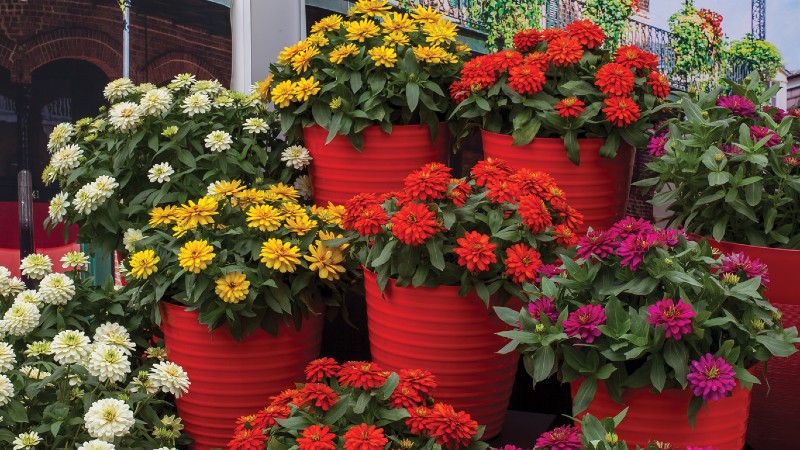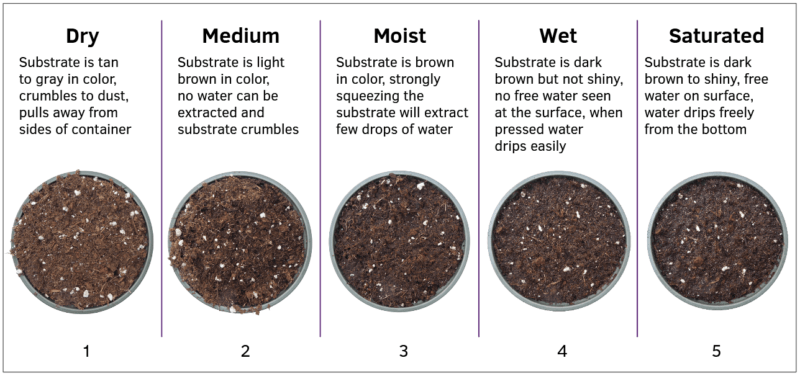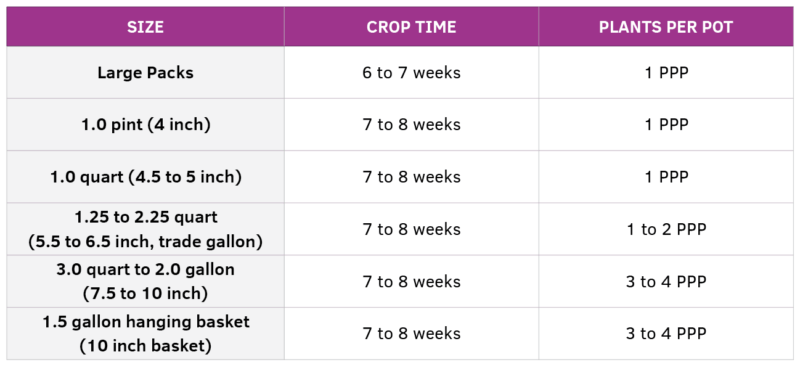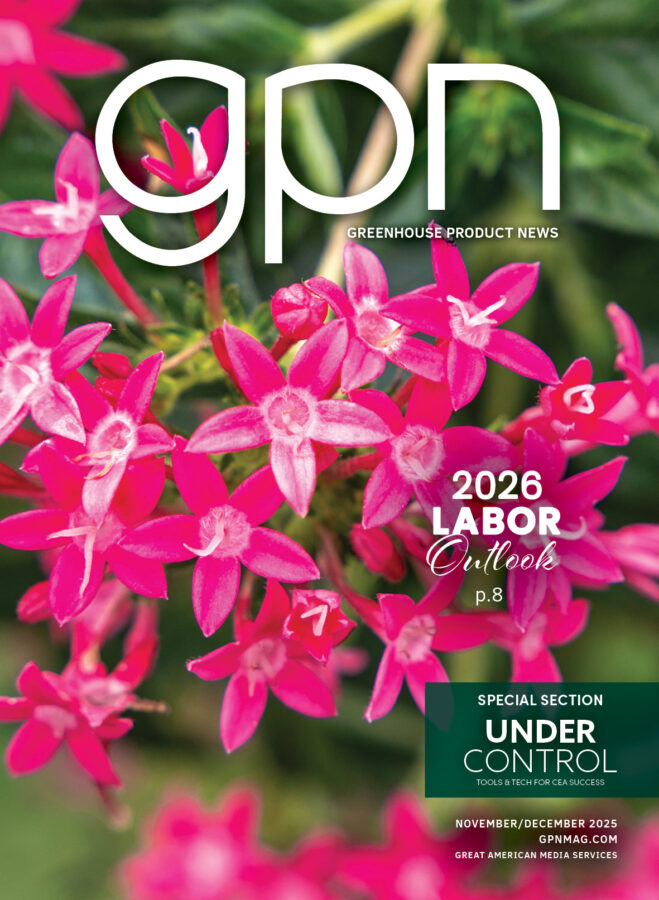
Culture Report: Zydeco Zinnia
Zydeco zinnia, a 2022 intro from Syngenta Flowers, brings impressive flower power to the garden and exceptional profitability to the bench. Zydeco is recognized for its striking combination of extra large Zinnia elegans-type flowers positioned on a tidy Zinnia marylandica plant structure, bringing together the best of both worlds.
The flowers are 25% larger on average than competing varieties, presenting a fully double flower form that brings depth and longevity to the bloom. Zydeco’s well-branched, mounded habit excels in both high-density production and landscape plantings, and is currently available in four vibrant colors. Make the most out of this quick, high-value crop — perfect for spring, summer and shoulder season sales.
GERMINATION AND YOUNG PLANT PRODUCTION
Sowing
Zydeco is quick to germinate; you should start to see emergence just one day after sowing. We recommend using one seed per cell in a 288-cell tray. Bottom heat will help facilitate germination. The substrate temperature should be maintained between 70 and 75° F and kept saturated until all seeds have germinated.
Moisture Management
As mentioned, keep the substrate saturated during the germination stages of production. Once plants have developed their first true leaves, substrate moisture can be reduced. Allow the substrate to dry down to the point where it is light brown in color and the tray is lightweight (moisture level 2), see Figure 1. When irrigating, wet the substrate completely (moisture level 4), but not to saturation.

Temperature and Light
Day temperatures should be between 72 and 74° F, and night temperatures should be between 66 and 68° F, with an average daily temperature of 71° F. Provide light intensities up to 600 to 700 μmol·m-2·sec-1 with a daily light integral (DLI) of 12 to 14 mol·m-2·d-1. Zydeco is a facultative short-day plant, meaning under short days, flowering is hastened. To prevent flower initiation during propagation, extend the day length up to 14 hours. Keeping the plant vegetative
throughout plug production will facilitate a more vigorous plug.
Nutrition and Growth Control
During young plant production fertilize Zydeco with 50 to 75 ppm nitrogen. Substrate pH should be kept between 5.5 and 5.9 with an electrical conductivity (EC) of 0.5 to 0.75 mS/cm using a saturated media extract (SME). Irrigate the plants to allow the substrate to dry between irrigations, alternating between moisture levels 2 and 4. Doing so is valuable for several reasons: it allows needed oxygen to reach the roots, promotes roots to fill the entire plug volume and helps to prevent substrate-borne pathogens. You are on the right track if you are seeing numerous bright white roots in 10 to 14 days.
No pinching is required during young plant production. To prevent stem stretch or if transplanting is delayed, use plant growth regulators (PGRs) to suppress growth. Bonzi sprays can be used at 4 to 10 ppm or B-Nine WSG sprays at 1,250 to 2,500 ppm; use lower rates in northern climates and higher rates in southern climates. Monitor plant growth and apply PGRs when you anticipate stem stretch. Conduct trials to determine what rates of different chemistries work best depending on individual production practices.
Overall time of young plant production for a 288-cell plug tray should be two to three weeks. Be sure to transplant zinnias on time; stress in the plug can lead to premature flowering.
FINISHING
Zydeco can be finished in large packs and 2.5-quart containers with one plant per pot (PPP). An additional PPP may be an option for 2.5-quart containers based on allotted grow time given; 3-quart and larger containers need three to four PPP (Table 1). Make sure the root ball is covered and the plug is situated in the center of the container. The crop should finish in 7 to 8 weeks.

container sizes. Estimated finish crop time is from transplant of a 288-cell tray and finished at an average daily temperature (ADT) of 69˚ F (20˚ C).
Temperature and Light
An optimal average daily temperature is 69° F with a day temperature of 74 to 76° F and night temperature of 62 to 64° F. Zydeco is a facultative short-day plant; day extension lighting is beneficial to 14 hours. Zydeco does not develop single flowers even under short days, but long days will ensure that the first flowers are fully double. Long days will promote more whorls of petals. Aim for a DLI of 14 to 16 mol·m-2·d-1.
Nutrition and Growth Control
Fertilize Zydeco with 200 to 250 ppm nitrogen for optimal vegetative growth and flower power. Maintain a media pH of 5.5 to 5.9 and EC (PourThru) of 1.4 to 2.0 mS/cm. Media should be allowed to dry between irrigations. Alternate between moisture levels 2 and 4 (Figure 1). Do not overwater — zinnias are susceptible to root diseases.
Pinching is not recommended or needed. Spray B-Nine WSG at 2,500 to 5,000 ppm one to three times depending on the container size and environmental conditions (Table 2). Begin PGR applications about 10 to 14 days after transplant. A Bonzi drench at 0.5 to 1 ppm can be used to prevent late flower stem stretch; apply when flowers start to show color. In the deep south, sprays of Bonzi can be used at 15 to 30 ppm. Additionally, Bonzi drenches at 1 to 2 ppm may be used for larger containers. As stated above, growers should conduct trials to determine what rates of different chemistries work best depending on individual production practices.

Growing at lower than recommended temperatures can lead to root disease issues. Common diseases to prevent include botrytis, bacterial leaf spot and Alternaria leaf spot. Some common pests are aphids, whiteflies and thrips.
For an enhanced reading experience, view this article in our digital edition by clicking here.









 Video Library
Video Library 


















